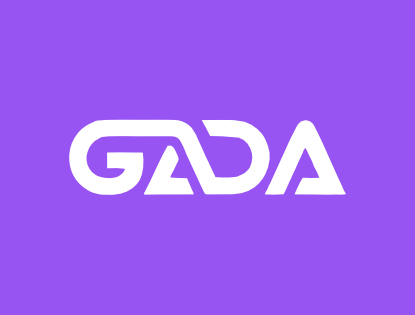TOPIC - IVF (In Vitro Fertilization)
IVF (In Vitro Fertilization) is a type of assisted reproductive technology (ART) where an egg is fertilized with sperm outside the body. Implications for women:
Positive implications:
1. Increased chances of pregnancy: IVF can help women with infertility issues conceive.
2. Treatment for various infertility causes: IVF can address issues like blocked tubes, endometriosis, or low sperm count.
3. Age is not a barrier: IVF can be an option for women over 35 or 40.
Negative implications:
1. Physical and emotional stress: IVF can be physically demanding and emotionally taxing.
2. Financial burden: IVF can be expensive, and insurance coverage may vary.
3. Risk of multiple pregnancies: IVF increases the risk of twins, triplets, or more.
4. Potential side effects: Medications used in IVF can cause side effects like mood swings, bloating, or ovarian hyper stimulation syndrome (OHSS).
IVF Cycle Types:
1. Fresh cycle: Using fresh eggs and sperm.
2. Frozen cycle: Using frozen embryos or eggs.
3. Donor cycle: Using donor eggs or sperm.
Other considerations:
1. Success rates: IVF success rates vary depending on age, health, and other factors.
2. Emotional preparation: Women should be prepared for the emotional ups and downs of IVF.
Who might benefit from IVF:
1. Women with infertility issues
2. Women with blocked fallopian tubes
3. Women with endometriosis
4. Women over 35 or 40 seeking pregnancy
Let's dive deeper into IVF:
IVF Process:
1. Ovarian Stimulation: Medications stimulate the ovaries to produce multiple eggs.
2. Egg Retrieval: Eggs are retrieved through a minor surgical procedure.
3. Sperm Collection: Sperm is collected from the male partner.
4. Fertilization: Eggs and sperm are mixed in a laboratory dish.
5. Embryo Culture: Fertilized eggs (embryos) are cultured for 3-5 days.
6. Embryo Transfer: One or more embryos are transferred to the woman's uterus.
Benefits:
1. Increased chances of pregnancy: IVF can help women with infertility issues conceive.
2. Treatment for various infertility causes: IVF can address issues like blocked tubes, endometriosis, or low sperm count.
3. Age is not a barrier: IVF can be an option for women over 35 or 40.
Risks and Side Effects:
1. Ovarian Hyper stimulation Syndrome (OHSS): Medications can cause OHSS, a potentially serious condition.
2. Multiple Pregnancies: IVF increases the risk of twins, triplets, or more.
3. Emotional Stress: IVF can be emotionally taxing.
4. Physical Side Effects: Medications can cause side effects like mood swings, bloating, or cramping.
Success Rates:
1. Age-specific success rates: Success rates vary significantly with age.
- Women under 35: Higher success rates (around 47% per cycle)
- Women 35-37: Success rates around 37% per cycle
- Women 38-40: Success rates around 24% per cycle
- Women over 40: Lower success rates (around 10% per cycle)
2. Health: Underlying health conditions can affect success rates.
3. Number of Cycles: Success rates may improve with multiple cycles.
Who Might Benefit from IVF:
1. Infertility Issues: Women with infertility issues, such as blocked tubes or endometriosis.
2. Unexplained Infertility: Couples with unexplained infertility.
3. Male Factor Infertility: Men with low sperm count or poor sperm quality.
4. Women Over 35: Women over 35 or 40 seeking pregnancy.
Alternatives and Complementary Therapies:
1. IUI (Intrauterine Insemination): A less invasive procedure where sperm is inserted into the uterus.
2. Donor Eggs or Sperm: Using donor eggs or sperm can be an option.
3. Surrogacy: Another option for women who cannot carry a pregnancy.
Emotional Support:
1. Counseling: Emotional support and counseling can help cope with stress.
2. Support groups: Connecting with others going through similar experiences.
IVF (In Vitro Fertilization) is a type of assisted reproductive technology (ART) where an egg is fertilized with sperm outside the body. Implications for women:
Positive implications:
1. Increased chances of pregnancy: IVF can help women with infertility issues conceive.
2. Treatment for various infertility causes: IVF can address issues like blocked tubes, endometriosis, or low sperm count.
3. Age is not a barrier: IVF can be an option for women over 35 or 40.
Negative implications:
1. Physical and emotional stress: IVF can be physically demanding and emotionally taxing.
2. Financial burden: IVF can be expensive, and insurance coverage may vary.
3. Risk of multiple pregnancies: IVF increases the risk of twins, triplets, or more.
4. Potential side effects: Medications used in IVF can cause side effects like mood swings, bloating, or ovarian hyper stimulation syndrome (OHSS).
IVF Cycle Types:
1. Fresh cycle: Using fresh eggs and sperm.
2. Frozen cycle: Using frozen embryos or eggs.
3. Donor cycle: Using donor eggs or sperm.
Other considerations:
1. Success rates: IVF success rates vary depending on age, health, and other factors.
2. Emotional preparation: Women should be prepared for the emotional ups and downs of IVF.
Who might benefit from IVF:
1. Women with infertility issues
2. Women with blocked fallopian tubes
3. Women with endometriosis
4. Women over 35 or 40 seeking pregnancy
Let's dive deeper into IVF:
IVF Process:
1. Ovarian Stimulation: Medications stimulate the ovaries to produce multiple eggs.
2. Egg Retrieval: Eggs are retrieved through a minor surgical procedure.
3. Sperm Collection: Sperm is collected from the male partner.
4. Fertilization: Eggs and sperm are mixed in a laboratory dish.
5. Embryo Culture: Fertilized eggs (embryos) are cultured for 3-5 days.
6. Embryo Transfer: One or more embryos are transferred to the woman's uterus.
Benefits:
1. Increased chances of pregnancy: IVF can help women with infertility issues conceive.
2. Treatment for various infertility causes: IVF can address issues like blocked tubes, endometriosis, or low sperm count.
3. Age is not a barrier: IVF can be an option for women over 35 or 40.
Risks and Side Effects:
1. Ovarian Hyper stimulation Syndrome (OHSS): Medications can cause OHSS, a potentially serious condition.
2. Multiple Pregnancies: IVF increases the risk of twins, triplets, or more.
3. Emotional Stress: IVF can be emotionally taxing.
4. Physical Side Effects: Medications can cause side effects like mood swings, bloating, or cramping.
Success Rates:
1. Age-specific success rates: Success rates vary significantly with age.
- Women under 35: Higher success rates (around 47% per cycle)
- Women 35-37: Success rates around 37% per cycle
- Women 38-40: Success rates around 24% per cycle
- Women over 40: Lower success rates (around 10% per cycle)
2. Health: Underlying health conditions can affect success rates.
3. Number of Cycles: Success rates may improve with multiple cycles.
Who Might Benefit from IVF:
1. Infertility Issues: Women with infertility issues, such as blocked tubes or endometriosis.
2. Unexplained Infertility: Couples with unexplained infertility.
3. Male Factor Infertility: Men with low sperm count or poor sperm quality.
4. Women Over 35: Women over 35 or 40 seeking pregnancy.
Alternatives and Complementary Therapies:
1. IUI (Intrauterine Insemination): A less invasive procedure where sperm is inserted into the uterus.
2. Donor Eggs or Sperm: Using donor eggs or sperm can be an option.
3. Surrogacy: Another option for women who cannot carry a pregnancy.
Emotional Support:
1. Counseling: Emotional support and counseling can help cope with stress.
2. Support groups: Connecting with others going through similar experiences.
TOPIC - IVF (In Vitro Fertilization)
IVF (In Vitro Fertilization) is a type of assisted reproductive technology (ART) where an egg is fertilized with sperm outside the body. Implications for women:
Positive implications:
1. Increased chances of pregnancy: IVF can help women with infertility issues conceive.
2. Treatment for various infertility causes: IVF can address issues like blocked tubes, endometriosis, or low sperm count.
3. Age is not a barrier: IVF can be an option for women over 35 or 40.
Negative implications:
1. Physical and emotional stress: IVF can be physically demanding and emotionally taxing.
2. Financial burden: IVF can be expensive, and insurance coverage may vary.
3. Risk of multiple pregnancies: IVF increases the risk of twins, triplets, or more.
4. Potential side effects: Medications used in IVF can cause side effects like mood swings, bloating, or ovarian hyper stimulation syndrome (OHSS).
IVF Cycle Types:
1. Fresh cycle: Using fresh eggs and sperm.
2. Frozen cycle: Using frozen embryos or eggs.
3. Donor cycle: Using donor eggs or sperm.
Other considerations:
1. Success rates: IVF success rates vary depending on age, health, and other factors.
2. Emotional preparation: Women should be prepared for the emotional ups and downs of IVF.
Who might benefit from IVF:
1. Women with infertility issues
2. Women with blocked fallopian tubes
3. Women with endometriosis
4. Women over 35 or 40 seeking pregnancy
Let's dive deeper into IVF:
IVF Process:
1. Ovarian Stimulation: Medications stimulate the ovaries to produce multiple eggs.
2. Egg Retrieval: Eggs are retrieved through a minor surgical procedure.
3. Sperm Collection: Sperm is collected from the male partner.
4. Fertilization: Eggs and sperm are mixed in a laboratory dish.
5. Embryo Culture: Fertilized eggs (embryos) are cultured for 3-5 days.
6. Embryo Transfer: One or more embryos are transferred to the woman's uterus.
Benefits:
1. Increased chances of pregnancy: IVF can help women with infertility issues conceive.
2. Treatment for various infertility causes: IVF can address issues like blocked tubes, endometriosis, or low sperm count.
3. Age is not a barrier: IVF can be an option for women over 35 or 40.
Risks and Side Effects:
1. Ovarian Hyper stimulation Syndrome (OHSS): Medications can cause OHSS, a potentially serious condition.
2. Multiple Pregnancies: IVF increases the risk of twins, triplets, or more.
3. Emotional Stress: IVF can be emotionally taxing.
4. Physical Side Effects: Medications can cause side effects like mood swings, bloating, or cramping.
Success Rates:
1. Age-specific success rates: Success rates vary significantly with age.
- Women under 35: Higher success rates (around 47% per cycle)
- Women 35-37: Success rates around 37% per cycle
- Women 38-40: Success rates around 24% per cycle
- Women over 40: Lower success rates (around 10% per cycle)
2. Health: Underlying health conditions can affect success rates.
3. Number of Cycles: Success rates may improve with multiple cycles.
Who Might Benefit from IVF:
1. Infertility Issues: Women with infertility issues, such as blocked tubes or endometriosis.
2. Unexplained Infertility: Couples with unexplained infertility.
3. Male Factor Infertility: Men with low sperm count or poor sperm quality.
4. Women Over 35: Women over 35 or 40 seeking pregnancy.
Alternatives and Complementary Therapies:
1. IUI (Intrauterine Insemination): A less invasive procedure where sperm is inserted into the uterus.
2. Donor Eggs or Sperm: Using donor eggs or sperm can be an option.
3. Surrogacy: Another option for women who cannot carry a pregnancy.
Emotional Support:
1. Counseling: Emotional support and counseling can help cope with stress.
2. Support groups: Connecting with others going through similar experiences.
0 Commentarios
0 Acciones
192 Views
0 Vista previa


